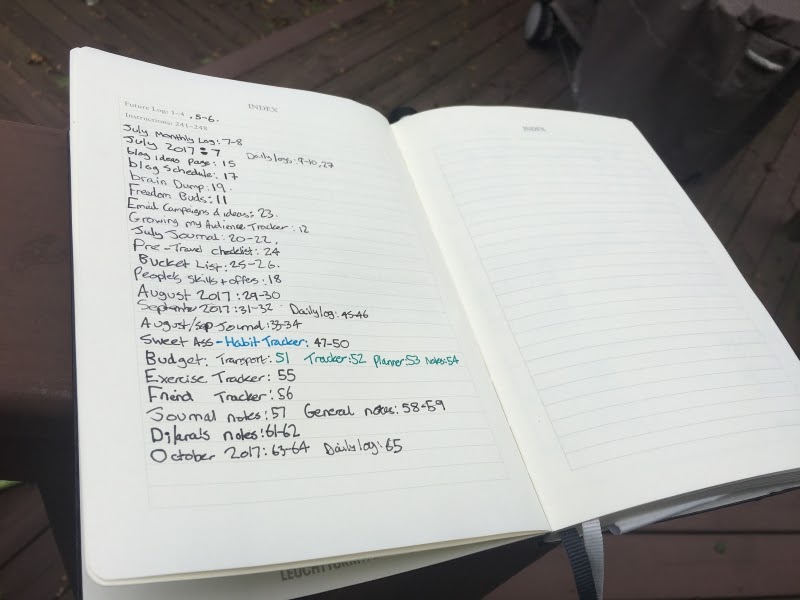If 2020 has brought us anything, it has greatly opened up discussions about mental health and anxiety. Now more than ever, people are discussing the excessive focus on the pressures of constant productivity and the disadvantages this can have on mental health. Since the beginning of the nationwide lockdown, an emphasis on self-care has been the linchpin of remaining calm and centered during these unprecedented times. Everything from art, to yoga, to light outdoor exercise has been promoted as different forms of personal mental health care.
One tried and true form of keeping yourself sane is journaling; writing your feelings down can oftentimes help you make sense of them. A different take on journaling is a neat little trick called a “dread list,” which is pretty much the same as it sounds. Creating a dread list can help people track the things that stress them the most and help them handle their issues accordingly.
What exactly is a dread list?
A dread list is very self-explanatory, although the name might be a bit of an over-exaggeration. They are defined as listing all of the problems you are avoiding on a piece of paper or a Word document, in order to mitigate the stress of feeling as if you have unfinished business or are forgetting something. Physically manifesting these issues can help you regain control over spiraling anxiety as a way of grounding yourself.
These types of lists may not necessarily involve documenting all of the things that clearly bring you “dread,” but rather minor issues that could still bring about some anxiety. Extreme life events like death and divorce are not the only things that could comprise a dread list, something as routine as having to go grocery shopping could be worthy of a bullet point on a dread list if it is something that brings you anxiety.

Writing down your fears and anxieties, even once a day, can have a tremendous beneficial impact on your mental health and wellness. Image courtesy of taratrue.com.
Why should I be making one?
Compiling these types of records can be beneficial in visualizing anxiety, which can lead to conquering multiple life stressors. Therapists and mental health professionals have long recommended this type of self-therapy. The act of writing down issues has been proven to reduce stress, with a study showing that writing your thoughts down for 20 minutes several times a day over a four-month period can lead to lower blood pressure and boosted immune function. These physical health improvements can lead to a more holistic approach to the health of the mind and body, as well as eliminate any life stressors that could crop up as a result of poor physical health. A dread list is a more specific type of journaling, focusing more on anxiety and fears rather than overall thoughts and emotions.
Journaling is not only beneficial for physical health, but emotional health as well. As a subcategory of regular journaling, jotting down your thoughts and feelings on any written platform into a dread list can help you navigate significant personal change and regulate your complex emotions. In addition, journaling can help you develop mechanisms to make sense of the world around you. By activating the right-side (creativity centered) portion of your brain, writing down thoughts can foster positive brain growth and development. This is an imperative skill to possess while living in such a tumultuous time that’s fraught with turmoil and countless external stressors.
If intensive, exploratory journaling is not your thing, do not fear! A dread list can serve as a bit of a shortcut. The creation of a bulleted point dread list can help you put these fears into words, acknowledging them as valid and helping you to overcome them. They can also be utilized as a sort of to-do list, as you can look forward to the satisfaction you will achieve after crossing something difficult but unavoidable off of your list.
How do I get started?
Depending on which approach you are taking, the creation of a dread list can be done from any location at any time. If you choose to utilize tools like Microsoft Word for your dread list, you can type one out while you are taking a break from a work-from-home assignment. On the other hand, if you still have a daily commute, you could even type one out on your phone’s Notes app, making it readily accessible every time you need to add or remove a task from it. More old-fashioned folk may choose to use pen and paper for their dread list; using pretty stationary or colored pens may be a soothing therapeutic technique for some people. While some people will naturally prefer one method over another, there is truly no right or wrong way to go about making your dread list. As long as you are getting your fears out of your head and into words, it will work as intended!

Dread lists are a simple way to help you feel like you are attacking your fears and anxieties. Image courtesy of letsgetjobless.com.
If you find your mental health suffering during such a stormy period in history, do not feel as if you are alone! Many people are working through their own personal stressors that have been exacerbated by the COVID-19 pandemic and subsequent political tension. If you are unfamiliar with the mental health realm, creating a dread list is a perfect, low to no pressure first step into navigating your emotions.
While dread lists are certainly advantageous, if you find that your anxiety is not improving it might be beneficial to arrange for a meeting with a mental health professional in order to explore these issues further. Thankfully, the stigma around mental and emotional health is breaking, making the desire for treatment and improved psychological health more commonplace and accepted. What are you waiting for, go get writing!
